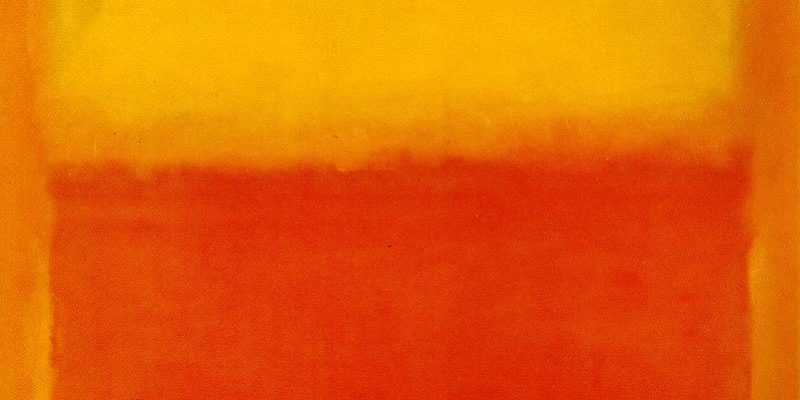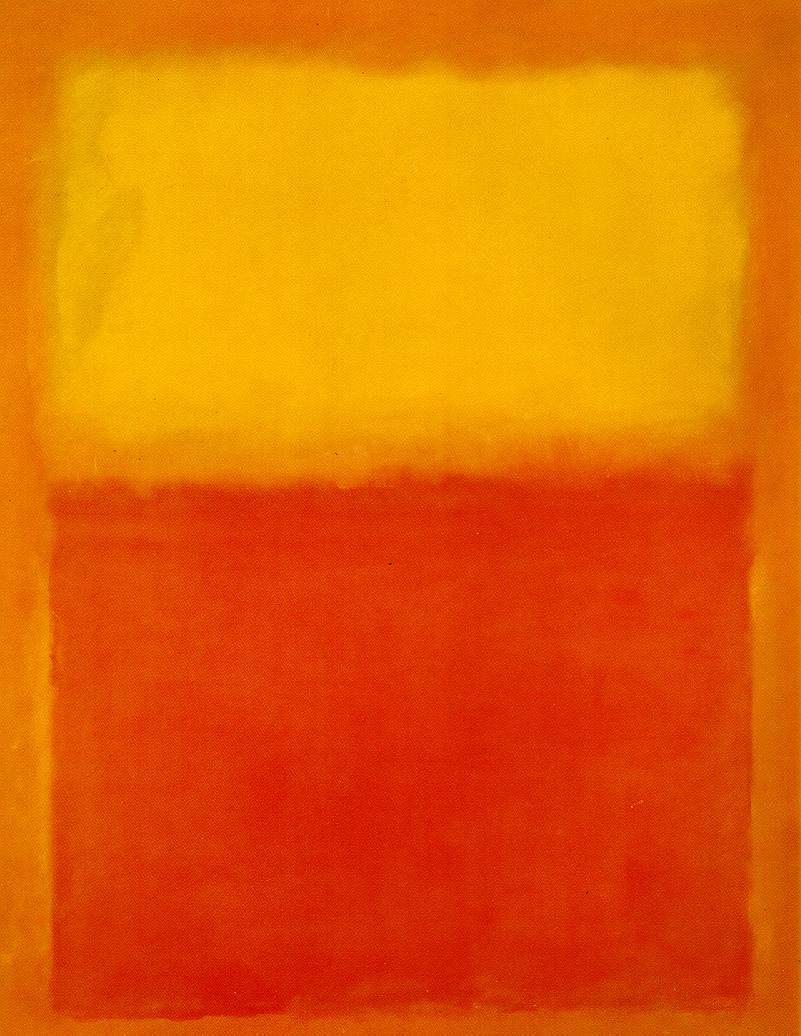What is beautiful? The term is a bit subjective, don’t you think? After all, isn’t beauty in the eye of the beholder?
It most certainly is, but one undeniable quality about color is its ability to make all things beautiful!
This is why color-field painting, with its abstract merging of vivid colors, is responsible for some beautiful works of art. In this post we will look at how color-field painting evokes emotions and has the ability to change an environment.
By now we know how color impacts art and also stirs emotion in people. Recent posts discuss color therapy, known as chromotherapy and the psychology of color, offering insight into how color can impact an individual. As artists, we know the emotional impact art can have on us. Vivid colors can stir emotions and hold an observers heart once they pass.
Sometimes, color makes beautiful what was not beautiful before. This is the case of color-field painting; color, shape, composition, proportion, balance, style, and scale change a blank canvas into a brilliant work of art.
This style of art is very abstract and those who are best known for its development are considered Abstract Expressionists. Color-field painting emerged in New York in the late 1940’s and early 1950’s. It was a type of art inspired by European modernism and made popular by artists like Mark Rothko and Barnett Newman.
What sets color-field painting apart from other types of abstract art is the artist’s regard for paint. With the main focus being color, shape, composition, proportion, balance, style, and scale, there is less emphasis on gesture, brushstrokes and consistent actions that create form and process. In fact, the entire work of art is created by the artist who determines what elements he or she will add to convey a sense of place, atmosphere, or environment. In other words, what makes color-field painting beautiful, is its subjectivity.
Like most art, the beauty of color-field painting is in the eye of the beholder. These colorful pieces are nice accents for decoration and fun to paint too! But don’t let the look of simplicity fool you. This style is not easy to perfect and contrary to how it appears, cannot be replicated by a 6 year old!
Have you splashed your art palette with color today? Try it and see how color changes what you see as beautiful.
Be a Artist in 2 minutes with Segmation SegPlay® PC (see more details here)
If you enjoyed this Segmation blog post, we’re sure you’ll like:
- Ernst Ludwig Kirchner: A Father of Expressionism
https://www.segmation.com/2013/02/05/ernst-ludwig-kirchner-father-expressionism/
- What Color Should You Paint Your Home?
https://www.segmation.com/2012/12/21/what-color-should-you-paint-your-home/
- United States Presidents Were Skilled Musicians
https://www.segmation.com/2013/01/22/united-states-presidents-were-skilled-musicians/









Nice intro to Color Field painting.
It was, in fact, based on a complicated ideology that took into account all the new information that was coming available in the scientific studies of colour and human perception of it.
Mark Rothko was deeply philosophical about his work. He sought to understand through his paintings what modern man’s spiritual and creative mythological requirements were. Amongst other things, he was trying to reconcile in his mind what had happend in Man’s development that could have possibly led to the atrocious events that occurred during the Second World War.
He and Leon Gottlieb published a manifesto on their misunderstood and highly criticized work in 1942 saying
“We favor the simple expression of the complex thought. We are for the large shape because it has the impact of the unequivocal. We wish to reassert the picture plane. We are for flat forms because they destroy illusion and reveal truth.”
Of his large colour field paintings, Rothko recommended that “a viewer (should) position themselves as little as 18 inches away from the canvas so that the viewer might experience a sense of intimacy, as well as awe, a transcendence of the individual, and a sense of the unknown. ”
There’s an excellent article on Wikipedia about Rothko which I encourage your readers to see. The quotes I’ve made here are from that article.
His paintings are conceived in profound thought that is often missed by the casual or uninformed viewer. When one is confronted with one of his very large canvases, they do inspire the awe that he sought to express.
As for Barnet Newman. I remember when the Canadian National Gallery purchased his Voice of Fire. After a few years of the purchase, I finally got to see it in the National Gallery in Ottawa.
Again, it’s a;very large painting, approximately 20 feet vertically and 8 feet wide. Just the technical difficulties of painting it would be incredible. Then the precision of the hard edge painting, and the creation of a flawless painting surface are more challenging difficulties he overcame to produce this painting.
If one is open to feeling the painting and not mocking it, a person should stand close before it and let themselves absorb the energy that it expresses. Looking straight up, one can imagine the voice of pure energy rising up to heaven. I liken it to the experience of that Moses may have had when God spoke to him in the desert.
I’d just like to see the naysayers try to duplicate the painting. They’d find out how difficult it was to create. And that is not even touching the thought processes that had to go beforehand in conceiving of the idea and making it into a reality.
Keep blogging! Your posts are bringing understanding of Art to your readers. Bravo!
Fascinating post – never thought of Colour in that way before – it has always been staring me in the face so to speak. Best wishes.
I learned something today. Thank you. And thanks for stopping by my Princess Speaks Dark Side of the moon…
Really love your post. It will help me alot with my work. Thanks for liking my post! it means alot 😀
Neat post! I did a science fair project in grade school on chromatography because it was different and unique. I loved the prisms made from light refracting off water, glass and the like, and wanted to explore the relationship.
Granted it was not the most scientific or detailed of displays but it was beautiful and all of the work was mine!
Thanks for liking my blog and helping me to find yours… It was neat to think back about that memory
Reblogged this on broadbrushstroke and commented:
I love this post by segmation. Sometimes we need to go back to the basics. Color is one of the most important things about any art.
I’ve always been fascinated by abstract art. From the simplistic to the complex. Its beautiful, bold, and exciting. I will one day attempt my own form of abstraction while still having fun in the process.
How wonderful! Have a Happy New Year. http://www.segmation.wordpress.com
Love this post. I relogged it 🙂
Thank you for reblogging my post. http://www.segmation.wordpress.com
Good post
Thank you. I like your blog as well.
I really enjoyed this post, and also the comments from “lookingfor beauty.” I’m inspired to learn more about this and Rothko’s paintings.
Not sure if this is the same thing but I fell in love with a painting by Sohan Qadri titled “purusha.” Literally fell into it and swam there in bliss. I bought a book of his work (can’t afford the real thing). It’s not quite the same as what you have here, but much of his work is pure color, or gradations of color, usually with texture, tiny holes, rips, creases. Tantric art it’s called by some. I’d be interested in hearing your thoughts about it.
We have our (relatively) new Clyfford Still Museum in Denver. Fabulous to see these works in person!
How wonderful! How many Still’s are in this museum. do you know? http://www.segmation.wordpress.com
I’m not sure, but the entire beautiful building is devoted to his works. You get to see his art developing from something like representational to super abstract.
I think I should go then. Sounds so wonderful. http://www.segmation.com
Not too far from San Diego.
I’m going to learn a lot by reading your posts! You have a new student 🙂
Wonderful. I look forward to reading your posts as well!
This is great. Color can captivate. Yes, their play changes and enhances their expression.